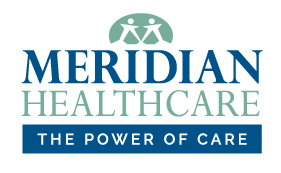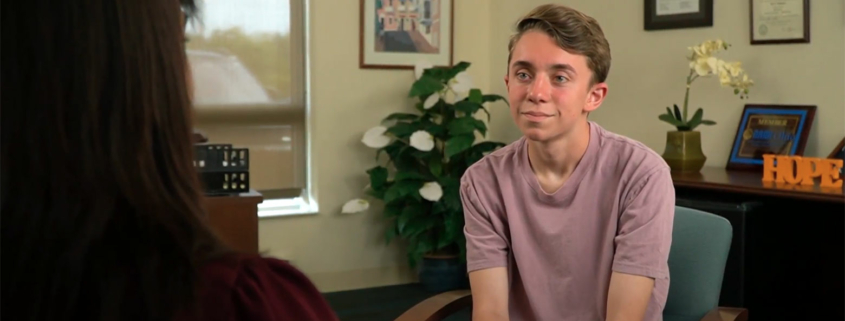Taking a Look at the 5 Most Common Mental Health Disorders in Children
Mental health disorders in children are hard to detect because they often struggle to express their feelings. Understanding the common mental health challenges your child may face is the best way to support them as they navigate treatment and work to understand their emotions. Here are the 5 most common mental health disorders in children, along with their symptoms and treatment options.
Table of Contents:
- Taking a Look at the 5 Most Common Mental Health Disorders in Children
- Attention-Deficit/Hyperactivity Disorder (ADHD)
- Treatment
- Anxiety Disorder
- Treatment
- Depression
- Treatment
- Eating Disorders
- Treatment
- Bipolar Disorder
- Treatment
- Other Mental Health Disorders to Know
- Adjustment Disorder
- Medications and Side Effects
- Meridian HealthCare Can Help
Attention-Deficit/Hyperactivity Disorder (ADHD)
Attention-deficit/hyperactivity disorder (ADHD) is the most common mental health disorder found in children, affecting about 9% of youth under 17 years old.
Diagnosis for ADHD requires a proper assessment from a health care provider. For children up to 17 years old, at least six symptoms must be identified and present for a few months at minimum. Diagnosing ADHD can be difficult because some symptoms are common for young children to experience even without the disorder.
Symptoms include, but are not limited to:
- Inability to pay attention
- Disorganization
- Losing or forgetting things
- Constantly moving
- Frequent or fast talking
- Speaking and acting without thinking first
- Trouble taking turns
- Struggling to be patient
- Frequently interrupting other people talking
Treatment
Counseling, medications, and behavior therapy can help alleviate ADHD symptoms, but it can take time to find the best treatment option for your child. Medication may help reduce the severity or frequency of symptoms but is not a cure for the disorder.
Anxiety Disorder
Anxiety can be a scary and overwhelming feeling for young children. Between 2016 and 2019, nearly 9.5% of children (about 6 million) between the ages of 3 and 17 were diagnosed with an anxiety disorder.
Warning signs of anxiety in children include:
- Separation anxiety (fear when being away from a loved one or parents)
- Extreme phobias
- Irritability
- Trouble sleeping
- Headaches
- Stomachaches
- Worrying about the future or “bad” things happening (generalized anxiety disorder)
- Fear of going to school or being in public (social anxiety disorder)
The cause of anxiety disorders is often unclear. However, some contributing factors include genetics, brain chemistry, life events (such as moving or starting school), or traumatic events.
Treatment
Treating anxiety in children involves a form of counseling, including psychotherapy (also called talk therapy), cognitive-behavioral therapy, or family therapy. In certain cases, prescription medication may reduce symptoms. However, medication alone is not a cure for anxiety and should be part of a treatment plan that includes counseling.
Depression
The Cleveland Clinic reports that 3% of children experience depression, affecting 13.3% of young adults aged 12 to 17. It is common for people of all ages to experience depression, but symptoms must persist for two weeks or longer to warrant a depressive disorder diagnosis.
Symptoms include:
- Feeling worthless or hopeless
- Low self-esteem
- Changes in appetite
- Loss of interest in activities
- Decreased performance in school
- Withdrawal from family members or friends
- Sleeping too much
- Low energy levels
- Thoughts of self-harm
*If this is an emergency, please call 911 or the Suicide Prevention Helpline at 1-800-273-8255.
Treatment
Cognitive Behavioral Therapy is often used to treat depression in children as it helps them understand and change negative thinking patterns and behaviors. Psychotherapy can also help children explore and understand their thought processes. In extreme cases, medication may be prescribed to reduce symptoms but should be part of a treatment plan that includes counseling with a mental health professional.
Eating Disorders
The American Psychiatric Association defines eating disorders as behavioral conditions with unhealthy eating habits. Two main types of eating disorders often begin in childhood and carry into adulthood: anorexia nervosa and bulimia nervosa.
Anorexia nervosa is a serious mental illness that affects how a person views their own body. Usually presented as self-starvation, anorexia has the highest mortality rate of any psychiatric diagnosis. Bulimia nervosa usually entails dieting with binge eating high-calorie foods, followed by fasting, vomiting, extreme exercise, or laxative use.
Eating disorders largely impact females, usually developing between the ages of 12 and 25. However, eating disorders are not gender-specific; many young boys and men struggle every year. Males make up 25% of those diagnosed with an eating disorder, leading to 10 million males suffering from an eating disorder at some point in their lives. Unfortunately, the true number is higher than reported because a lot of men do not seek help due to the ongoing stigma.
Eating disorders are more than just unhealthy eating; they are serious medical conditions that can cause severe medical complications.
Warning signs of eating disorders include:
- Dizziness or fainting
- Ceased or irregular menstrual periods
- Cold intolerance
- Heartburn and reflux
- Depression, irritability, poor concentration, and fatigue
- Excessively eating until uncomfortably full
- Only eating alone
Treatment
Once diagnosed through a physical exam and psychological evaluation, treatment can begin. It may be done as a team, with physicians, dietitians, mental health professionals, and your child’s support system coming together. Psychotherapy is often used to talk through their relationship with food. Hospitalization may be recommended in severe cases.
Bipolar Disorder
Bipolar disorder is a mental illness that affects approximately 2% of the population. It may be difficult to diagnose because symptoms vary from person to person and even change over time. According to the National Institute of Mental Health, bipolar disorder is marked by extreme mania followed by depression.
Symptoms include:
- Depression (feeling sad or hopeless)
- Anxiety (feeling worried, nervous, stressed)
- Irritability (sudden outbursts of anger)
- Extended, intense happiness
- Trouble sleeping without feeling tired
- Frequent, unprovoked sadness
- Eating too much or not enough
- Difficulty concentrating
- Extreme mood swings
- Low self-esteem
Treatment
Consistent treatment for biploar disorder guided by healthcare professionals includes medications and psychotherapy. If your child is taking medication for bipolar disorder, do not halt medication when their mood swings become less extreme.
Other Mental Health Disorders to Know
With adolescents, it’s important to be aware of other mental health problems so you can get your child the help they need.
- Schizophrenia may include hallucinations, disorganized speech or behavior, and a lack of emotion. It’s treated with antipsychotics (medications).
- Oppositional Defiant Disorder is when your child easily loses their temper. They may be resentful, hurtful, and argumentative.
- Conduct Disorder presents with lying, manipulation, physical aggression, and delinquent behaviors. It can be associated with substance abuse in some cases.
- Obsessive Compulsive Disorder (OCD) consists of persistent and distressing thoughts, images, or obsessions that lead to repetitive behaviors and compulsions.
- Panic Disorder is an anxiety disorder with regular panic attacks. In certain cases, it can be connected to post-traumatic stress disorder (PTSD).
- Autism spectrum disorder is a developmental disability (developmental disorder) that can cause significant social, communication, and behavioral challenges. It affects about 1 in 59 children in the U.S., according to the Centers for Disease Control and Prevention (CDC).
- Substance Use Disorder commonly co-occurs with other mental health disorders, especially anxiety and depression.
Pediatric healthcare providers and mental health professionals use the Diagnostic and Statistical Manual of Mental Disorders (DSM) to diagnose mood disorders or mental health disorders if they display consistent symptoms for two weeks or longer.
Adjustment Disorder
Adjustment disorder is commonly diagnosed with adolescents following a significant life event, such as death of a loved one or pet, parent’s divorce, moving, school problems, and health issues. A diagnosis for adjustment disorder captures any kind of emotional or behavioral shift within three months of these stressors.
This disorder commonly presents itself as depression, anxiety, a mix of both anxiety and depression, disturbance of conduct, or disturbance of emotions and conduct symptoms.
Medications and Side Effects
Medication is a common treatment option for mental health conditions, but there are some risk factors to consider (as with any medication). An antibiotic may leave your child with a stomachache, while antidepressants can lead to insomnia or drowsiness. Always consult with your child’s doctor about potential side effects before starting a new medication.
Meridian HealthCare Can Help
While these are the 5 most common mental health disorders in children, a therapist can help when your child’s mental health is affecting their well-being.
Remember that children’s brains are still developing, so they experience mental health problems differently than adults. If you suspect that your child has a mental health disorder, it’s best to consult with a professional who can determine the best treatment options. Meridian HealthCare offers behavioral health and mental health services; don’t hesitate to give us a call to help navigate children’s mental health or behavior disorders.





